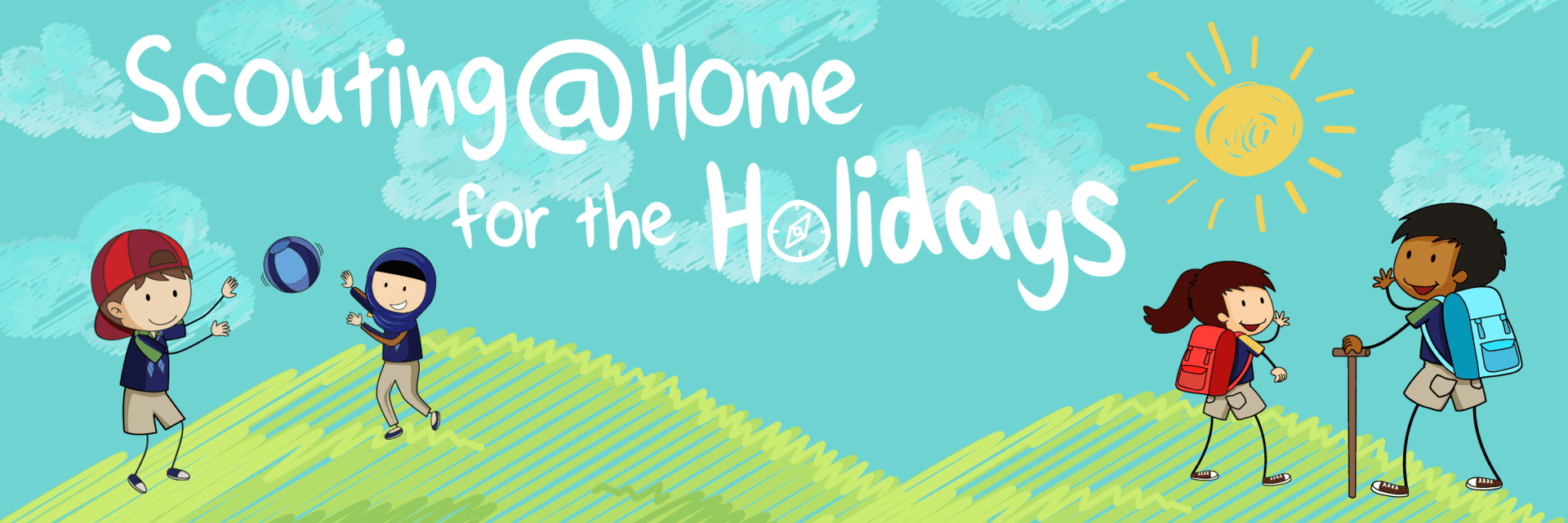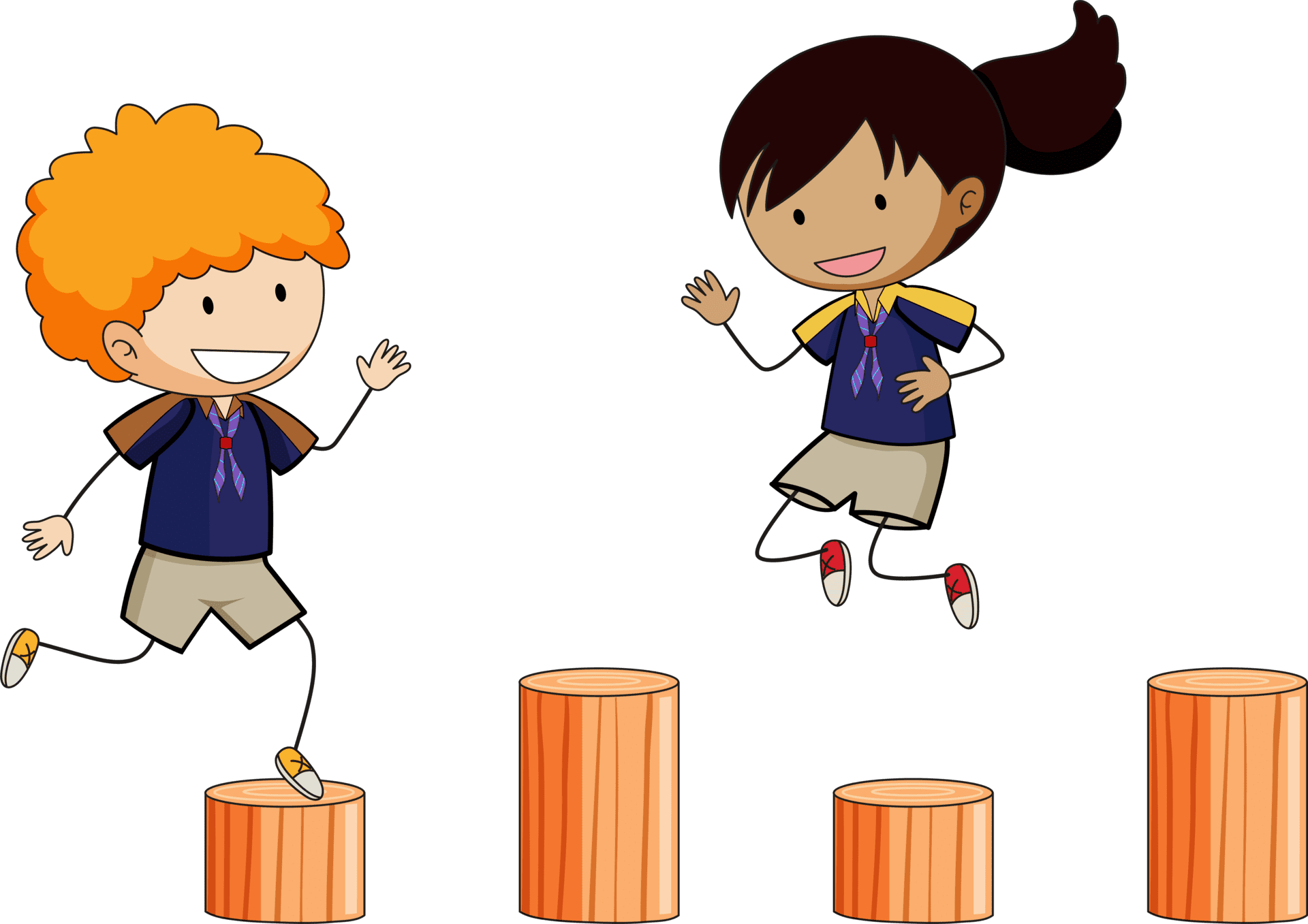
Continue your Scouting adventures over the summer holidays!
The Scouting year may have wrapped up, but Scouting@Home for the Holidays gives you the opportunity to continue the fun over the summer holiday period.
Each week, we’ll introduce a new set of five new challenges for you to complete – each based on the following Challenge Areas.
Keep posted as we unveil new challenges each week!






Keep Score
- Download a Score Card to keep track of your progress.
- Complete the challenges set out each week.
- When you’ve finished your challenge(s) for the week, fill in the form below to log your activities. Note - you only need to complete at least one of the challenges!
- You'll receive an email with a certificate and snazzy virtual badge to show your friends!
Ready to get stuck in? Discover the challenges for this week below. The Weekly Challenge Chart will be added to the right-hand side of this page each week.
Week 6 Challenge

My 2021 Goals
The countdown to the 2021 Scout Year is on! Make it your best year yet by setting some goals to achieve this year.
Instructions
- Think about your Scouting journey so far. How long have you been in Scouts? What is your favourite experience so far? What have you learnt?
- Think about the year ahead. Do you have something you’re working towards and would like to achieve in Scouting in 2021?
- Grab a pen and paper and set a timer for five minutes. During this time, brainstorm seven values that inspire you. What do you want more of in your days, or what do you have in your days that you love? Examples include fun, kindness, curiosity, learning etc.
- Set your timer for another five minutes and write down five goals you want to accomplish in Scouts in 2021. Think big and keep your core values at mind. Remember that you don’t need to know how you are going to accomplish the goal right now.
- Look at each of your goals and break them down into doable chunks – the more specific the better! What can you do to make your goals into reality?
- Set your timer for another five minutes and write down every reason you can think of that you wouldn’t accomplish your goals. This is free reign, let the negative come out!
- It is time to work through the barriers. Spend 5-10 minutes planning through these negative reasons. Accomplishing big goals does not mean that there are no blocks in the road! It means that you are able to problem solve and work through adversity.
- Share your goals with your parents, a friend in Scouts or even your Leader.
Reflection
One of the most important aspects to goal setting is accountability. By both writing down your goals, and then sharing your goals with people who will support you, you increase your likelihood of achieving your goal!
Create Your Own Raft
Collect some natural materials during a walk outdoors and challenge yourself to use these to create a raft that can float in water!
What you'll need
- Natural materials
- Scissors
- String
- Tape
- Your imagination!
Instructions
- Head outside and collect some natural materials you think would work for creating a raft.
- Draw up the design for your raft, making sure you include the natural materials you’ve collected.
- Using your materials, scissors and string (and maybe some tape) assemble your raft. The raft only has to be small but try to make it so it can float on water!
- Grab a bucket, and with an adult’s help, fill it up with water.
- If you can’t find a bucket to fill with water, try using your bath or sink – think outside the box!
- If you live near a body of water like a lake, river or beach, why not bring your raft down and test how it’ll go against the elements!
Reflection
Did your raft float or sink? Why do you think it worked/didn’t work? If you had the opportunity to design a different raft, what would you do differently? What other water-based devices could you build using natural materials?
How Do You See The World?
Try to draw your partner’s thoughts and learn about how people with sensory differences see the world.
Instructions
- Assemble a Project Patrol with at least one other person.
- If conducting this activity face-to-face, sit back-to-back with your partner. Each of you should have some paper and coloured pens or pencils.
- Think of an object or feature in or around your location.
- Try to describe the object or feature to your partner, without saying what it is.
- Your partner should then try to draw the object or feature from the description.
- Swap roles and get your partner to pick and describe an object while you draw it.
- Show each other your papers and see how accurate your drawings are!
- Reflect on the activity – who had the hardest job, the drawer or the describer?
- What did this activity teach you about senses, and communication?
Reflection
Without being able to see, smell, hear or touch something, an object or feature can be difficult to identify. How would you cope with things you do every day if you lived with sensory differences? How might you spot someone who is struggling and what could you do to help them?
Scouts Pictionary
Pictionary is a board game that combines the guesswork of charades with drawing. The person drawing for each team selects a card at random and draws a picture from it. The team must try to guess what the word is. The person drawing cannot talk or write down letters or numbers in their drawings. Give your game of Pictionary a personal twist by making your own cards.
Create your own game of Scouts Pictionary and challenge your siblings and friends to play along and test their knowledge of Scouting!
What you’ll need
- Card stock paper
- Pen
- Coloured pencils, crayons or markers
- Ruler
- Sheets of paper (for the playing the Pictionary game)
- Pictionary Board Game Template
Instructions
- Cut square cards from card stock paper for each Pictionary card you want to create. Create as many cards as you can!
- Draw five boxes in a row on the card, going horizontally from top to bottom. Starting with the top box and working your way down, colour in each box with the corresponding colour: yellow, blue, orange, green, and finally red. The first box will be yellow, the second box will be blue, and so on down to the last box, which is red.
- Write a "P" in front of the first box. This letter matches the letter on the category cards in the game, letting the person drawing the picture know what category the word falls under.
- Write an "O" by the blue box, an "A" by the orange box, a "D" by the green box and the letters "AP" by the red box.
- Write down a word in each box for the player to draw. These words should all fit into the theme ‘Scouting’.
- P: A person, place or animal. Proper nouns can be used too, if they fit into the person, place or animal group.
- O: An object. This must be something you can touch or see.
- A: A verb. This must be an action that you can perform, such as ‘climb’ or ‘abseil’.
- D: A difficult word. This is any word that is challenging to draw or guess.
- AP: This means ‘All Play’, i.e. any word of your choice. This means the person drawing the pictures for each team will all draw this word at once, and whichever team guesses it correctly first will take their turn next.
- Print off the Scouts Pictionary board game here.
- Gather a group of your friends/siblings and split everyone into two teams. Use your Scouts Pictionary cards just as you would regular Pictionary cards to play a game of Pictionary. When a team takes their turn, the person drawing selects a card and draws the picture in the coloured box matching the coloured square their team is on. Haven’t played Pictionary before? Click here for instructions.
Reflection
This activity encouraged you to create your very own Scouting themed Pictionary game. Could you think of different Scouting terms for each category? How did each team go? Can you bring your Pictionary game to Scouts?
The Art of Flower Pressing
Studies show the powerful impact of art and creative expression on health and wellbeing. Not only does art help with problem-solving, creativity, literacy, fine and gross motor skills, connection, and understanding, but it often also helps us relax and slow down!
Get creative by designing a flower press to use with flowers and leaves collected from your backyard or local area.
Instructions
- Research the different ways of making a flower press. What equipment or items do you need? What sort of flowers are best to use in a flower press?
- Go for a walk in your garden or around the block to find some flowers for this activity. If you are picking flowers in your local area, ask the householder for permission first. If they are wildflowers, be mindful that some are protected by law and cannot be picked.
- Create your flower press using your equipment or items.
- Get creative by positioning your flowers and leaves in a pattern or to create an interesting image!
Reflection
Did your flower press work the way you had anticipated? What worked or didn’t work with your chosen flower press? What flowers worked and didn’t work? Discuss your thoughts on what makes certain flowers and leaves better to use.
A Note on Safety...
If you are aged 18 years or under, you must have your parent's permission or supervision before you begin any activity.
As always, be sure to abide by the Scout Promise, whether engaging in online conversations through email, virtual conversations with other Scouts or on social media, and by phone.
Visit Kids Helpline for best practices on internet safety, or click here for more information on keeping safe online.


 English
English
